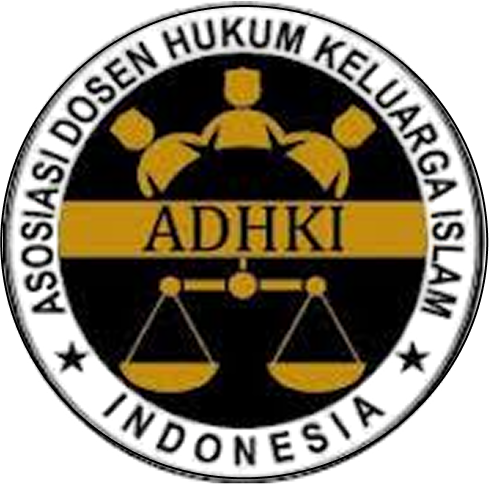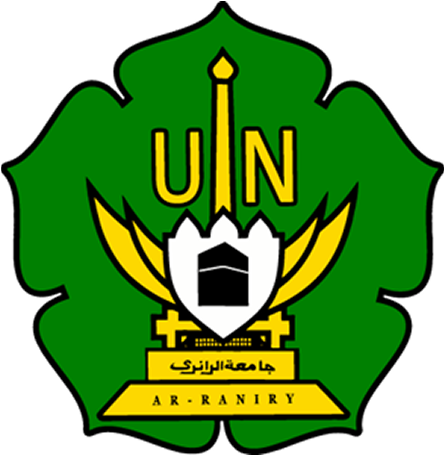Dialectics of Theology and Ecology in Ammatoa ri Kajang in Bulukumba, Indonesia: Paradigm of Tawhidic and Environmental Fiqh in Sulapa Appa
DOI:
https://doi.org/10.22373/sjhk.v9i1.28242Keywords:
Tawhidic Paradigm, Fiqh Ecology, Sulapa AppaAbstract
This study aims to integrate the Tawhidic paradigm with the local wisdom found in Amatoa ri Kajang to develop a comprehensive framework for ecological fiqh. The research adopts a qualitative approach, utilizing content analysis of the Amatoa ri Kajang text and Islamic theological sources such as the Qur’an and Hadith. By examining the teachings on ecological balance, simple living, and resource management from Amatoa ri Kajang, the study explores how these principles align with Islamic values of tawhid (oneness of God), Khalifa (stewardship), and ihsan (ethical conduct). The results show that both frameworks emphasize the importance of maintaining harmony between humans and nature, with strict prohibitions on environmental exploitation. The originality of this study lies in its integration of Islamic jurisprudence with indigenous wisdom, offering a new perspective on how ecological fiqh can be developed to address contemporary environmental challenges. The research implications suggest that this framework could be institutionalized within Islamic legal systems, providing culturally relevant and ethically grounded solutions for environmental governance.
References
A. Akil, & Osman, W. “Bugis Local Wisdom in the Housing and Settlement Form: An Architectural Anthropology Study.” Lowland Technology International 19, no. 1 (2017).
A. Malik. “Tawhid and Social Harmony: A Reflection on Islamic Community Building.” Islamic Social Studies 16, no. 3 (2022).
Abdulla, M. “Tawhidic Paradigm and Sustainable Economic Development.” Journal of Islamic Economics 14, no. 2 (2022).
Al-Attas, F. “Tawhid and Knowledge: Unifying Religious and Scientific Understanding.” Islamic Studies Review 23, no. 1 (2023).
Alief Syarif, Et. all. “Conservation of Forest Resources Based on Local Knowledge of Indigenous Peoples.” Environment Asia 16, no. 2 (2023).
Andi Muhammad Akhmar, et all. “View of Poured from the Sky: The Story of Traditional Ecological Knowledge in Cérékang Forest Conservation.” Forest and Society 6, no. 2 (2022).
Arsyi, N., M. Arsyad, and & M. Hasyi P. Palloan. “Using the Saoraja Lapinceng Traditional House as a Media for Local Wisdom Based-Physics Learning on Equilibrium of Rigid Body.” Jurnal Pendidikan MIPA 24, no. 1 (2023).
Arumningtyas, R. et.all. “Pasang Ri Kajang: An Oral Tradition in Conserving the Indigenous Forest.” Journal of Southeast Asian Cultures 15, no. 2 (2023).
Aydin, N. “Paradigmatic Foundation and Moral Axioms of Ihsan Ethics.” Islamic Ethics Journal 19, no. 4 (2021).
Azis, S. A. “Ancient Local Culture of the Buginese and Islam: Phenomenological Analysis of the Acculturation of Islam and the Bissu Tradition.” European Journal for Philosophy of Religion 15, no. 3 (2023).
Aziz, Ibnu, and Ahmad Malik Abdul Aziz. “Limas House Horizontal Proportion and Dulang Module: The Collectivism of Austronesian, Buddhism, Hinduism, Taoism, and Islam in Palembang History.” Journal of Islamic Architecture 7, no. 2 (2022).
E. Morrell. “Strengthening the Local in National Reform: A Cultural Approach to Political Change.” Journal of Southeast Asian Studies 32, no. 3 (2001).
Efendi, D. “Muhammadiyah’s Ecological Movement in Indonesia: From Fiqh to Political Advocacy.” Journal of Islamic Activism 8, no. 2 (2021).
Giannisa, J. “Representation of Appa Sulapa in the Logo.” Journal of Semiotics in Southeast Asian Studies 7, no. 1 (2023).
Hidayatullah, H. “Analysis of Groundwater Conservation Policy in South Kalimantan from an Ecological Fiqh Perspective.” Journal of Islamic Law 13, no. 3 (2022).
Indrayanti, Suminar, J. R., Siswadi, A. G. P., & Setianti, Y. “Communication Pattern with Sulapa Eppa in the Single-Parent Family in Makassar City.” Library Philosophy and Practice, 2019.
Khalimovna, K., and N. Omonova. “Hashar: Unlocking Traditional Collective Works Practice as Integrated Cultured Islamic Philanthropy Model.” BANCO: Jurnal Manajemen Dan Perbankan Syariah 6, no. 2 (2024).
Latifah, U. “Unveiling Partnership Culture in Sharia Banking Regulations.” BANCO: Jurnal Manajemen Dan Perbankan Syariah 6, no. 2 (2024).
M. A. Sayem. “Religion and Ecological Crisis: Christian and Muslim Perspectives.” Journal of Comparative Religious Studies 19, no. 2 (2022).
M. Dallh. “Islamic Approaches to Integral Ecology.” Ecological Sustainability Journal 9, no. 1 (2024).
M. Iqbal. “Islamic Education and the Tawhidic Paradigm: Towards Holistic Learning.” Journal of Islamic Education 11, no. 2 (2021).
Muhamad, M. M. “Theocentric Worldview: Sustainability Education for Religion and Spirituality.” Journal of Islamic Environmental Ethics 10, no. 1 (2021).
N. Naing, & Djamereng, A. “Settlement Adaptation Model for Flood Disaster Mitigation in Salomenraleng Village Wajo Regency.” Journal of Architecture & Environment 22, no. 1 (2023).
N. Naing, & Hadi, K. “Vernacular Architecture of Buginese: The Concept of Local-Wisdom in Constructing Buildings Based on Human Anatomy” 8, no. 3 (2020).
Najib, M. “Fiqh and Ecological Jurisprudence: A New Approach for Environmental Conservation.” Islamic Legal Studies Review 12, no. 2 (2020).
Nasr, H. “Islamic Spiritual Ecology: Tawhid as the Basis for Environmental Stewardship.” Journal of Ecological Ethics 14, no. 4 (2021): 66–82.
Nisar, S. “Islamic Wealth and the Sustainable Development Goals.” Journal of Islamic Finance 9, no. 3 (2021).
Nurhidayati, and A. T. Adriyanto. “The Role of Tawhidic Paradigm in Knowledge Creation Process.” Islamic Knowledge and Science 18, no. 2 (2022).
Pelras, C. Manusia Bugis, Terj. Abdul Rahman Abu, et.All (II). Ininnawa, 2021.
R. Purnamasari, Rismala, & Ibrahim, H. D. “Syariah-Compliant Fintech in Banking: Bridging Financial Gaps in Indonesia and the Philippines.” BANCO: Jurnal Manajemen Dan Perbankan Syariah 6, no. 2 (2024).
R. Rifaldi, Mustafa, M. “Sulapa Appa Influence on Traditional Building Designs in South Sulawesi.” Journal of South Sulawesi Architecture, 11, no. 1 (2022).
S.A, Ragozina. “Environmentalism in Modern Islamic Philosophy.” Journal of Islamic Philosophy 13, no. 1 (2023).
S.M. Yahya, R. Sarif. “Islamic Finance and the Tawhidic Paradigm: A Framework for Social and Economic Justice.” Journal of Islamic Finance and Economics 17, no. 1 (2023).
SOOD, HEBA ABOU-EL-. “Multicultural Analysis of Islamic Banking Selection: A Study in the United Arab Emirates.” BANCO: Jurnal Manajemen Dan Perbankan Syariah 6, no. 2 (2024).
Syah, Yuhasnibar, Nurulbahiah binti Awang Iskandar Iskandar, and Rahul Husni. “For The Sake of Survival: Illegal Gold Mining Exploitation Crimes from Environmental Fiqh in South Aceh Regency.” Legitimasi: Jurnal Hukum Pidana Dan Politik Hukum 13, no. 1 (2024).
Syahrian, A. “Tari Pakarena Anida as a Symbol of Women’s Power in Sulapa Eppa.” Journal of Southeast Asian Performing Arts 6, no. 1 (2024).
Syarif, Ananta Yudono, Afifah Harisah, and Moh Mochsen Sir. “Sulapa Eppa As The Basic or Fundamental Philosophy of Traditional Architecture Buginese.” SHS Web of Conferences 41, no. 04005 (2018). https://doi.org/10.1051/shsconf/20184104005.
Triadi, Feby, and Petsy Jessy Ismoyo. “Sulapa Eppa: Bissu, Bugis Cosmology, and Queer Political Ecology.” Jurnal Perempuan 27, no. 3 (2022). https://doi.org/10.34309/jp.v27i3.718.
Wati, S. “Philosophy of Sulapa Eppa in Village Fund Management in Luwu Utara.” Journal of Local Wisdom 12, no. 2 (2022).
Yunus. “Makna Simbol Bentuk Dan Seni Hias Pada Rumah Bugis Sulawesi Selatan.” Jurnal Seni & Budaya Panggung 22, no. 3 (2012).
Downloads
Published
Issue
Section
License
Authors who publish in Samarah: Jurnal Hukum Keluarga dan Hukum Islam agree to the following terms:
- Authors retain copyright and grant the journal right of first publication with the work simultaneously licensed Attribution-ShareAlike 4.0 International (CC BY-SA 4.0) that allows others to share the work with an acknowledgment of the work's authorship and initial publication in this journal.
- Authors are able to enter into separate, additional contractual arrangements for the non-exclusive distribution of the journal's published version of the work (e.g., post it to an institutional repository or publish it in a book), with an acknowledgment of its initial publication in this journal.
- Authors are permitted and encouraged to post their work online (e.g., in institutional repositories or on their website) prior to and during the submission process, as it can lead to productive exchanges, as well as earlier and greater citation of published work. (See The Effect of Open Acces)









